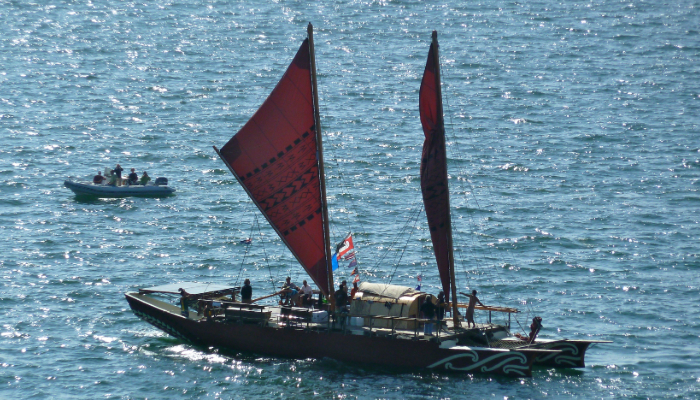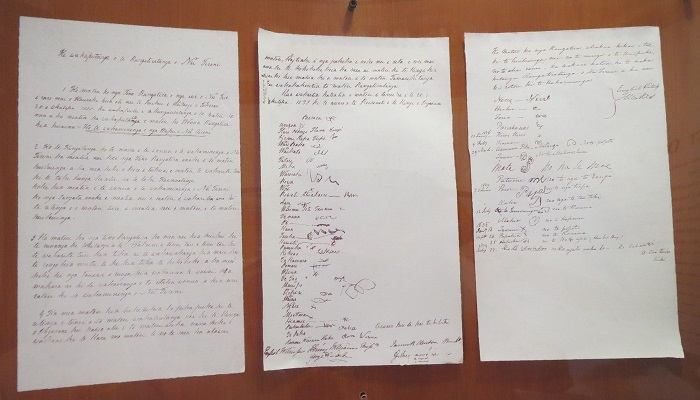Māori culture and customs
Where can I find information about traditional Māori culture and customs?
(Years 7-10)

Image: Waiata performance at Uepohatu Marae on The Governor-General of New Zealand. Public domain. Image cropped.
Entry last updated: 3/09/25
Introduction
The arrival of Kupe in Aotearoa marked the beginning of Māori culture and customs in New Zealand. Māori established traditions and rituals before the arrival of European settlers. The new arrivals had a huge impact on the lives of Māori, their reo (language) and tikanga.
Traditional Māori lifestyle
Here is a list of some familiar te reo Māori words used to describe various aspects of Māori culture and customs. These are just some examples.
Tangata whenua: Original people of a land or people of a tribal region (does not include visitors).
Tikanga: Values and practices that are a part of Māori social life.
Taonga: Any knowledge, property or object that is treasured or prized.
Kaitiakitanga: Guardianship or protection of the environment, based on traditional Māori customs.
Tūrangawaewae: A powerful Māori concept used to describe a connection to a place where you feel empowered and like you belong.
Pōwhiri: A ceremony of encounter performed at the beginning of a meeting between host and guest.
Haka: Māori war dance traditionally used to challenge the enemy. It can also be used to welcome people in peaceful times. There are many different types of Haka.
Waiata: Māori songs. There are different types of waiata, for example waiata tangi (laments) and waiata aroha (songs of love).
Rongoā: Traditional Māori medicine made from plants.
Kōwhaiwhai: Patterns that were painted on ridgepoles. Kōwhaiwhai represents genealogy so each tribe has their own kōwhaiwhai pattern.
Hāngī: Originally the earth oven used to steam food, now often used to describe a meal cooked in this traditional way.
Marae: A fenced in area with a carved building that belongs to a particular iwi (tribe). It serves as a meeting place for cultural or official events.
Pre-European Māori
Pre-European Māori refers to the time when Māori first arrived in Aotearoa till the arrival of James Cook in 1769. In this section we will look at some Māori beliefs, food, medicine, and customs as they were before Europeans came.
Te Ara: The Encyclopedia of New Zealand
Te Ara is an excellent starting point for all questions about Aotearoa New Zealand.
Go down to the area called Sections and explore each of the following sections to discover information on various aspects of pre-European Māori.
Go to the Sitemap for a list of all the sections on the Te Ara website.
The section Māori New Zealanders has information about different Iwi (tribes) and Māori origins and arrivals.
Or go to Topics at the top of the page and choose Māori life and traditions for a list of different stories.
Look at Daily life in Māori communities – te noho a te hapori which covers primary work, food habits and daily rituals of early Māori.
Or read up on Te ngahere – forest lore, Te hopu tuna – eeling, and Rongoā - traditional Māori medicine.
Or find out about Traditional Māori religion – ngā karakia a te Māori.
Tips: Te Ara is bilingual which means you can read this site in Māori or English. If we scroll down to the bottom of the page we can see that the website belongs to the Ministry for Culture & Heritage, so the information is well-researched and reliable.
This is one of the EPIC resources — a collection of reliable databases covering lots of different topics. It is put together especially for New Zealand school students and helps to answer questions like this.
Here you can find information on how the Māori survived when they first came to New Zealand.
Using search words such as ‘Pre-European Māori’ or ‘Early Māori’ should bring up articles such as The Lost Art of Fishing and Gourds, Truffles and Coprolites.
Try a few different search words or keywords to get the most out of this database.
Tips: To get to the EPIC resources you will need a password from your school librarian first. Or you can chat with one of our AnyQuestions librarians and they will help you online. Some EPIC databases may also be available through your public library.
National Army Museum | Te Mata Toa
The National Army Museum is about New Zealand’s military history, military exhibits, memorabilia etc. You will find information about the weapons used by early Māori.
Use search words Māori weapons to find a link to the different types of Māori weapons.
Tips: Websites that have .com or .co in the address can have good information, but you need to assess how reliable it is. Check the About us link on the website, if you can find one. That can tell you what the company’s mission and values are.
The YouTube channel from the Ministry of Culture and Heritage has a useful videos on early Māori history.
In the search feature for the channel enter 'Māori'.
Kupe in the Hokianga and Wellington Harbour's taniwha are two examples of early cultural stories of places in New Zealand.
Or you can go to Playlists and then choose a playlist that includes Roadside Stories to browse local stories.
This video sharing website allows individuals and organisations to upload videos and make them available to people around the world. There are some great videos uploaded by Waka Huia TVNZ, the New Zealand Maritime Museum and other organisations about the history of New Zealand.
Use the keywords ‘Pre-European Māori’ to find the video clip Māori Paa in pre-European times. This is a two part series on early Māori living.
Tips: Remember to check that the videos you are watching are from a reliable organisation. YouTube allows people to comment on videos so you might come across different opinions. What’s important is to take what is positive and constructive from these comments.
Māori culture in colonial New Zealand
Colonial New Zealand is the period between the arrival of James Cook in 1769 until 1914 when the First World War began. The Europeans dominated New Zealand in colonial times and this had an impact on Māori life, including food, farming, government, religion, and land ownership.
Te Ara: The Encyclopedia of New Zealand
Te Ara also has good information that explores the influence colonisation had on Māori life.
Go to Topics and choose Māori life and traditions again.
Select Ahuwhenua - Māori land and agriculture to read about Changes to Māori agriculture and Land ownership and Māori agriculture.
Use different search words or keywords to find related information on this topic (you could use some of the words from our list of te reo Māori words above).
For example, search for 'converts' to read about Māori converts.
The relationship between Europeans and Māori could be very difficult. Many wars were fought between Māori and European settlers. There were also wars fought between Māori tribes.
Search words such as Musket wars, New Zealand Wars, Kiingitanga and Parihaka will bring up articles and images on these significant events in the history of colonial New Zealand.
Tips: Remember to check the related content that comes up on the side of your results page. Besides links to articles and images, there are links to biographies and other related sites that will help you further explore your topic.
This website has films, short films, documentaries, music videos, television footage, and video clips that reflect New Zealand’s heritage.
Use search words such as ‘Māori culture’ to bring up short films.
Whare Māori is a 13 part series on the history of Māori architecture, which includes the impact of colonial architecture.
In One Land, two families (one Māori and one Pākehā) go back in time to the 1850's to try to live on one land and learn about one another's cultures.
Tips: Search words, or keywords, are the most important words in our question. Usually it’s better to leave out small words like ‘the’, ‘a’ and ‘of’ and just choose the main ones, eg Māori culture. We can always change our keywords or add more if we need to.
New Zealand History Collection (BWB)
This is another EPIC resource. This particular resource has lots of full-text books covering the history of Māori and Pākehā in New Zealand.
Tangata Whenua - a history of the Māori people from ancient times until recently.
In/visible Sight: The Mixed-Descent Families of Southern New Zealand - lives of part Māori and part-Pākehā New Zealanders in the nineteenth century.
The New Zealand Wars: Ngā Pakanga o Aotearoa - the wars between Māori and Pākehā between the 1840s to 1870s. These wars also cover Māori customs that determined Māori Pākehā relationships.
Tips: To get to the EPIC resources you will need a password from your school librarian first. Or you can chat with one of our AnyQuestions and they will help you online. Some EPIC databases may also be available through your public library.
Survival of Māori culture
Māori culture struggled for survival in a European dominated society. However there were people like Sir Apirana Ngata, Sir Peter Buck, Princess Te Puea, Dame Whina Cooper and others who will always be remembered for leading the fight to preserve Māori language, rights and traditions.
Te Ara: The Encyclopedia of New Zealand
Te Ara has some great sections on important events in the history of Māori-Pākehā relations such as the Treaty of Waitangi and the Declaration of Independence.
Go to Topics and then Treaty of Waitangi.
From the list, look at Te Tiriti - the Treaty, He Whakaputanga – Declaration of Independence, and Waitangi Tribunal – Te Rōpū Whakamana.
Dictionary of New Zealand Biography (DNZB)
DNZB is part of Te Ara — The Encyclopedia of New Zealand. It has over 3,000 biographies of New Zealanders who have ‘made their mark’ on this country. It does not include people who are alive. This site includes around 500 biographies that are in te reo Māori.
You can search by name for biographies of famous Māori such as Sir Apirana Ngata, Te Rangi Hīroa (Sir Peter Buck), Princess Te Puea and others.
The biographies cover their lives and the part they played in the struggle to retain Māori identity and tikanga.
Tips: Te Ara contains biographies of people who have made a significant contribution to New Zealand, but it does not include people who are alive. Remember to explore External links and sources as they include links to other websites with more information about your topic.
Te Tai Treaty Settlement Stories
This is a digital storytelling programme on Te Ara that explores the Treaty of Waitangi | Te Tiriti o Waitangi settlements and their impact. The website can be viewed in English or Te reo Māori.
Look down the page for the story called Te mana o te reo Māori.
Choose Te mana o te reo Māori timeline.
This is a list of events that have been important in the history of te reo Māori from 1200 to today.
Published from 1952 to 1976 by the Māori Affairs Department, this website lets you search and browse all 76 issues of the magazine Te Ao Hou: The New World. This magazine was meant to address matters of interest to Māori.
You can browse this magazine using the tabs at the top of the page or use the search box.
Use keywords 'waiata' to read an article on the survival of Māori songs or waiatā.
Type in 'tangi' to read an article on the sharing of grief.
Search words 'traditions' will bring up an article on how Ruatoria got its name.
‘Te Puea Herangi’ will bring up an article on the memories of Princess Te Puea.
Tips: Te Ao Hou has bilingual content so articles can be read in both English and te reo Māori.
Contemporary Māori culture
Museums, Māori art, maraes, waiatas, and the performance of haka at games and special occasions are all examples of how Māori culture and traditions are alive today.
The haka has been associated with the All Black rugby team since 1888. Today the haka is a much looked forward to custom that precedes every game played by the team.
Scroll down the front page to the link The Haka for an explanation of the origins of the haka, the myth behind this famous ceremonial dance, and the commitment of the All Blacks to continue with this tradition.
Scroll down this page and watch the video Kapa O Pango, the special haka written for the All Blacks and why it was added.
Even though this is a commercial website, it has comprehensive coverage on ta moko.
Select the tab Tattoo Styles.
Select Maori Tattoo: The Definitive Guide to Ta Moko to read about ta moko, how it became popular, the legend behind the art, the process, and how the art lives on today.
Further down the page you will find explanations and meanings for common Māori designs and patterns.
Tāhurangi - New Zealand Curriculum
This site from the Ministry of Education has resources all about the New Zealand Curriculum. It is aimed at teachers, but has good resources about waiata.
The search box might say Rapua ki NZC.
Use the keyword 'Waiata' in the search box.
Explore the link Hei Waiata, Hei Whakakoakoa.
Select a waiata from the Song List.
This will have an audio file that you can play of the song.
You can also Download resources including song sheets.
Tips: Websites that have .org or .net in the address can have good information, but you need to assess how reliable it is. Check the About us link on the website, if you can find one. That can tell you what the organisation’s mission and values are.
Manatū Taonga | Ministry for Culture & Heritage
The purpose of the Ministry of Culture and Heritage is to develop policy and law around promoting a confident and connected culture of New Zealand.
Go to the Engagement with Māori tab.
Choose Taonga Tūturu to learn about how the Ministry for Culture and Heritage should interact with iwi.
Te Ara Taonga and Mātauranga Māori Te Awe Kōtuku are programmes the Ministry is involved with to support Māori.
Books
Your public library or school library will have many books on Māori culture and customs. Here are some titles to start with:
Introducing Māori culture by Don (Donald Murray) Stafford.
Tikanga Māori : living by Māori valuesby Sidney M Mead.
Exhibiting Māori : a history of colonial cultures of display by Conal McCarthy.
Te marae : a guide to customs & protocol by Hiwi Tauroa and Pat Tauroa.
Māori religion and mythology : illustrated by translations of traditions, karakia, &c by Edward Shortland.
The Maori as he was : a brief account of Maori life at it was in pre-European days by Elsdon Best.
SCIS no: 1834253
Topics covered
Related content

Pūrākau (Māori origin stories)
Where can I find information about Pūrākau (Māori origin stories)?

Ngā pūoro Māori (Māori music)
Where can I find information about ngā pūoro Māori (Māori music)?

Kapa haka
Where can I find information about kapa haka?

Māori leaders and heroes
Where can I find information about Māori leaders and heroes?

Te reo Māori (Māori language)
Where can I find information about te reo Māori (the Māori language)?

Pacific navigation
Where can I find information about Pacific navigation?

Māori history
Where can I find information about Māori history?

Hauora - health
Where can I find information about hauora - health and well-being?

Decl. of Independence NZ
Where can I find information about He Whakaputanga o te Rangatiratanga – The Declaration of Independence?

Treaty of Waitangi
Where can I find information about the Treaty of Waitangi - Te Tiriti o Waitangi?

Matariki (junior)
Where can I find information about Matariki?

Kiingitanga (Māori King movement)
Where can I find information about Kiingitanga – the Māori King movement?

Kupe navigates around Aotearoa
Discover resources related to Kupe's journey to Aotearoa and Pacific navigation.
